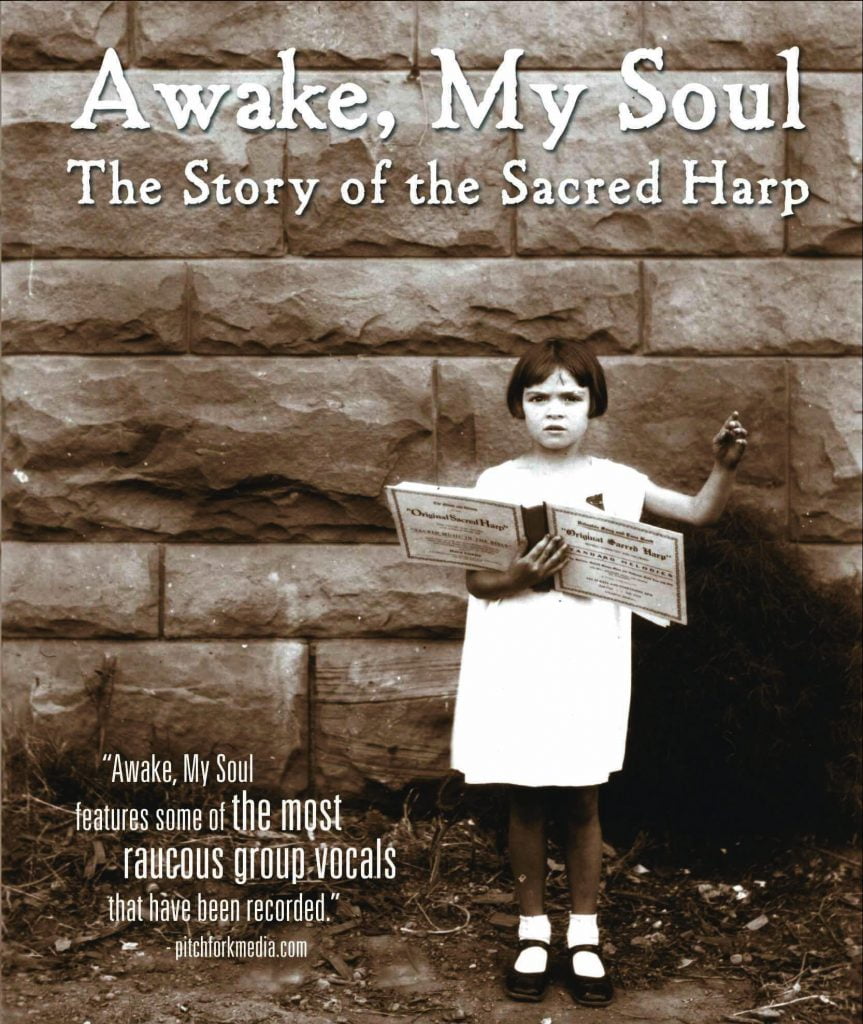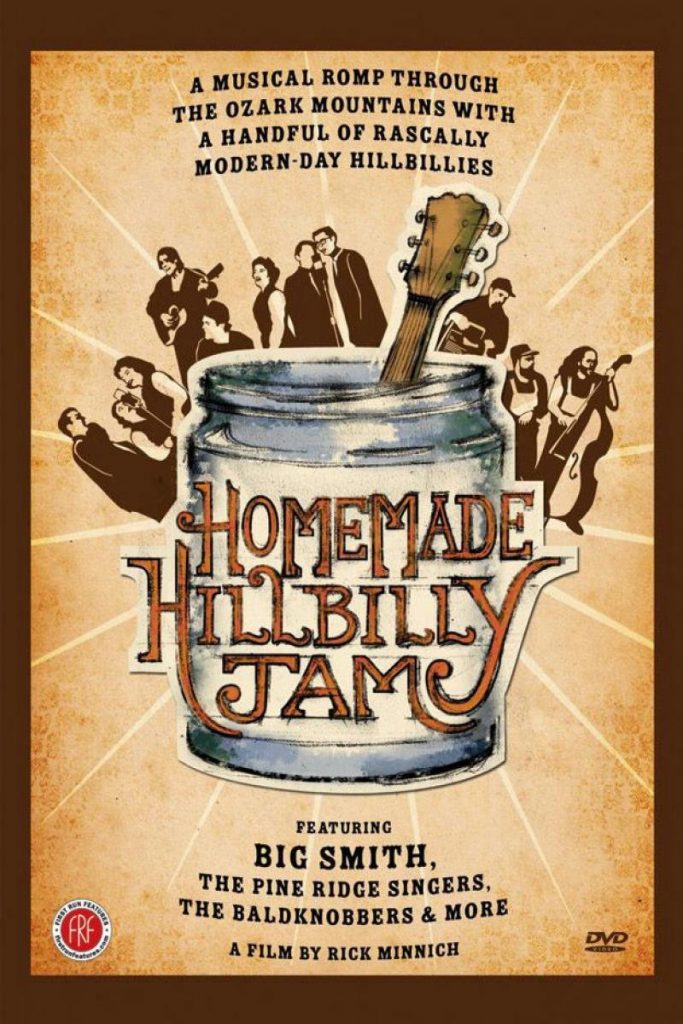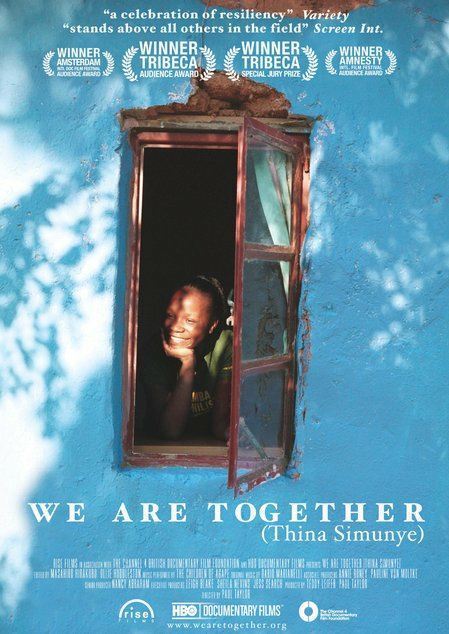This is a revised and expanded version of an article originally published at Christianity Today. It was originally titled “Those Who Have Ears to Hear… Let Them Watch: Three documentaries bring cultures and conflict to life through music.”
–
I must have been about one year old when I first heard the merry, musical words “I’d like to teach the world to sing / in perfect harmony” coming from my family’s black-and-white television. It’s amazing to me that I remember it so well, and even more amazing that I can remember seeing people dance to that Coca-Cola commercial jingle. In a powerful way, music helps us see more clearly.
That song became a hit single for the Hillside Singers, and it’s been recorded more than seventy times since then. Such a simple sentiment, but its fundamental idea is powerful and true—music cultivates harmony and peace.
How we need that kind of reconciling influence in our lives! Today, please! I can hardly endure television news anymore, and my preferred information source—NPR News—has been stripping years off of my life with constant coverage of America’s political strife. While we debate emotional subjects—religious, political, and cultural—it’s a good time for all of us to be reminded of what unites us.
This month, three new DVDs give you an opportunity for unforgettable musical journeys. All you need is a DVD player, and you can voyage to the Talladega National Forest, or the Ozarks, or South Africa, to experience soulful, inspiring music from unforgettable people.
I’ve seen them, and I encourage you to make all three trips. You won’t regret it.
AWAKE MY SOUL: THE STORY OF THE SACRED HARP
“If you sing it very long it’ll be in your blood and you’ll never get it out.”
That’s Elene Stovall of Birmingham, Alabama, and she’s talking about Sacred Harp singing. She’s committed to this communal form of worship, a musical tradition of a capella hymn singing with deep roots in…
… wait. You’re tuning out, aren’t you?
 Church music may not be the big-screen’s most scintillating subject. But stick with me. Awake My Soul: The Story of the Sacred Harp inspired me so much that I watched it again the very next day with my surround-sound system turned up to “11.” The DVD is on my list of “Things to Give the Family for Christmas.”
Church music may not be the big-screen’s most scintillating subject. But stick with me. Awake My Soul: The Story of the Sacred Harp inspired me so much that I watched it again the very next day with my surround-sound system turned up to “11.” The DVD is on my list of “Things to Give the Family for Christmas.”
Sacred Harp singing has roots in America’s rural South that run about 200 years deep. The name comes from the only musical instrument involved—”the instrument given by God”— the human voice. And before this lively documentary is over, you’re likely to conclude that the music’s power is inspired by the gospel at its heart.
It pays to have a powerful sound system. You’ll wonder how these singers, pressed tightly into the pews of small church sanctuaries, have any voice left at the end of a gathering. They’re trying to shatter the stained glass windows, singing for hours and hourse. The power resonates in the floor, through the soles of your shoes, and up into your ribs—as if the music is trying to shake your own voice loose.
Turn it up. Awake My Soul will make you want to sing.
I asked Erica Hinton, who co-directed the film with her husband Matt, what drew her to make Awake. “I was taking a documentary film class at Georgia State University in 1998,” she said, “and had to make a ten-minute film. Matt suggested the topic of Sacred Harp. I’d been to a handful of singings and immediately agreed that it would be a great subject to document. I quickly came to realize that ten minutes was nowhere close to enough time to tell the story of this deep subject. We were both inspired to make a more in-depth film. … Basically, we just didn’t stop filming, even after I was done with that film course. … Eventually [we] had to make ourselves quit filming and start focusing on turning our huge amount of footage into a film.”
Showing exemplary respect for their subjects, the Hintons draw out the history of Sacred Harp from longtime devotees like Richard Delong of Whitesburg, Georgia, who brings us into the assembly at Shoal Creek Church in Talladega National Forest. He describes “shape note singing,” a method of teaching music that grew popular as Protestant churches sought to cultivate some form of musical discipline.
For many, 91-year-old Raymond Hamrick, a watch repairman and Sacred Harp songwriter, will be the most memorable character. Hamrick composed “Lloyd,” a popular Sacred Harp hymnal tune, after hearing a heavenly host in his dream. “He’d like this song sung at his funeral,” says Erica, “but only if there’s more of a handful of singers singing it. … I find comfort in the thought that there will be singers spilling out of the room when that sad day comes, possibly in small part due to our film.”
What’s the appeal of vigorous hymn singing? For one thing, it’s not about performing. “It’s experiential,” says one enthusiast. “You just do it.” And while it’s clear that there are levels of skill and experience, it’s also clear that anyone of any age is welcome to join the chorus. This isn’t music for consumers (although, if you pick up the deluxe DVD package, you’ll get a CD full of Sacred Harp singing. (The soundtrack and the various artists compliation arrived on October 14, and you can listen to selections on the official site and at MySpace.) This open invitation creates a unique communal experience that strengthens the ties that bind—generation to generation, neighbor to neighbor, congregation to God, and even heart to mind and body.
Young Richard Ivey, beaming with joy, raves, “It’s almost like the ground is shaking under you. I feel like sometimes I’m just going to be lifted up… it’s such a strong powerful sound.”
And isn’t that what we hope for in worship—that sense of being lifted up? Consider this DVD a “gateway drug” to music that inspires a healthy, holy high.
HOMEMADE HILLBILLY JAM
What comes to your mind when you read the word “hillbilly”? It’s probably not a glamorous picture.
But Rick Minnich’s documentary Homemade Hillbilly Jam helps redeem the term by introducing us to descendants of Scotch-Irish immigrants in the mountains of rural Missouri. These hard-working farm communities reject the insulting stereotype inspired by The Beverly Hillbillies and perpetuated in American entertainment. Interviewing old-timers on the farm, hard-rocking guitar-strummers at the local hang-outs, and families who sing together in their living rooms, Minnich captures a meaningful tradition of farming, family, and music that makes you want to pack your bags, hit the road, and find them in person.
 Minnich avoids lectures and history lessons. He’s more interested in the personalities and perspectives of the “neo-hillbillies.”
Minnich avoids lectures and history lessons. He’s more interested in the personalities and perspectives of the “neo-hillbillies.”
We meet 34-year-old singer/songwriter Mark Bilyeu of the popular folk-rock band Big Smith, and he invites us to his family’s Thanksgiving dinner—several generations of Ozark tradition gathered around one table on a brisk autumn day. They hold hands for a prayer, expressing their hope that the next generation will “learn to love Jesus in the same way.”
The scene may seem foreign, or as familiar as canned cranberries. But what is likely to surprise most viewers is what happens after dinner, when the Bilyeus gather in the living room with mandolins and electric guitars. Have you ever heard “What a Friend We Have in Jesus” sung to washboard percussion? “Any family can get together and watch football,” says Mark, “but not every family can get together and play five guitars at once and make it sound halfway decent.”
He explains that the drive to keep Big Smith together has everything to do with preserving the traditions of his elders. “There’s so much about our everyday existence that’s not worth keeping. When you come upon something that is worth keeping you really want to hold onto it. … There are some things that are timeless, and we’ll hold on to those things.”
Much could have been made of the colorful history in these hills, or the political perspectives of these edgy backwoods musicians. But Minnich isn’t out to make any political points. Instead, he lets the contagious spirit of the music—in bars, in living rooms, in churches—break down preconceptions and prejudice. The Bilyeus may not behave like your friends and relatives, but by the end of Homemade Hillbilly Jam, you’ll want to call them family.
WE ARE TOGETHER
“There is a song I like to sing to remember my mother. It was her favorite song. I try to sing it so that I never forget her in my life.”
Those words are spoken with evident sadness by Slindile Moya, a 12-year-old girl from KwaZulu Natal, South Africa, at the beginning of We Are Together. She sings the song, her voice tender and soulful. And then, she looks into the camera and breaks into the biggest, most beautiful smile I’ve seen on any screen in years.
 Without that smile, without that voice, We Are Together might feel like just another documentary about African suffering. But director Paul Taylor and producer Teddy Leifer capture the radiance and heart in the Moya family, and in the children of Agape—the Christian home for AIDS orphans called where Slindile has grown up.
Without that smile, without that voice, We Are Together might feel like just another documentary about African suffering. But director Paul Taylor and producer Teddy Leifer capture the radiance and heart in the Moya family, and in the children of Agape—the Christian home for AIDS orphans called where Slindile has grown up.
It’s harrowing to consider the hardship that the Moyas and their neighbors suffer, and when Agape’s orphans gather in a choir to make soulful, spirited music, it’ll break your heart. The regal matriarch of the orphanage—the formidable, unforgettable personage of Gogo “Grandma” Zodwa —says, “At Agape, we have unconditional love.”
We Are Together shows how music has bound people together in hope through poverty and the spread of AIDS. These are not just poster-children for misery. This is a vibrant family, and we don’t want to leave their company. It’s easy to root for the Agape choir as they record a studio demo, in order to send their music out into the world—a beautiful S.O.S.
The film is a sort of cry for help. Taylor, a volunteer at Agape, took a break from working there to make the film for about $200,000. With help from the Channel 4 British Documentary Film Foundation, editor Masahiro Hiraku (Trainspotting), and composer Dario Marianelli (Atonement), the movie won 13 audience awards and other prizes at 30 film festivals around the globe.
For all of its popularity, it’s hard to ignore the fact that We Are Together follows the simplest—and cynics would say, the most exploitative—documentary formula. We Westerners can get this kind of emotional distress, swiftly followed by predictable uplift, on a weekly basis, thanks to shows like “Extreme Home Makeover.” At times, Taylor’s methods feel a bit invasive, zooming in on dramatic family ordeals and deathbed struggles. Slindile and her siblings are prompted to answer obvious questions about where it hurts and how badly. And the film’s climax may inspire you to pray for some hope more substantial than charitable gestures from American celebrities like Alicia Keys and Paul Simon.
Still, compared to the “reality TV” programs that wring manufactured drama from manipulated situations, We Are Together is an example of admirable restraint. Taylor and his team let the images and the music speak for themselves. By the end of the film, the chorus “Oh happy day, when Jesus comes” has become an overwhelming expression infused with weariness, grief, hope, and joy. We’re reminded that Africa is not as far away as we might think. The Moyas are not foreigners—they’re the neighbors we’re commanded to love.
* * *
These three films—Awake My Soul: The Story of the Sacred Harp, Homemade Hillbilly Jam, and We Are Together—would make a fine festival for anyone who loves good movies and great music.
I’m grateful for the privilege. I’ll never forget Slindile’s smile. I’m haunted by the song of Mark Bilyeu’s grandmother, which he sings from memory in an empty chapel. And whenever I set my watch, I’ll think of dear Raymond Hamrick in Macon, Georgia—a man who repairs pocketwatches in his workshop so they’ll tell the proper time, and who then composes glorious music that recalibrates body, mind, and soul, to show us what is timeless.
I recently was given a copy of We Are Together from a friend. Looking forward to watching it.